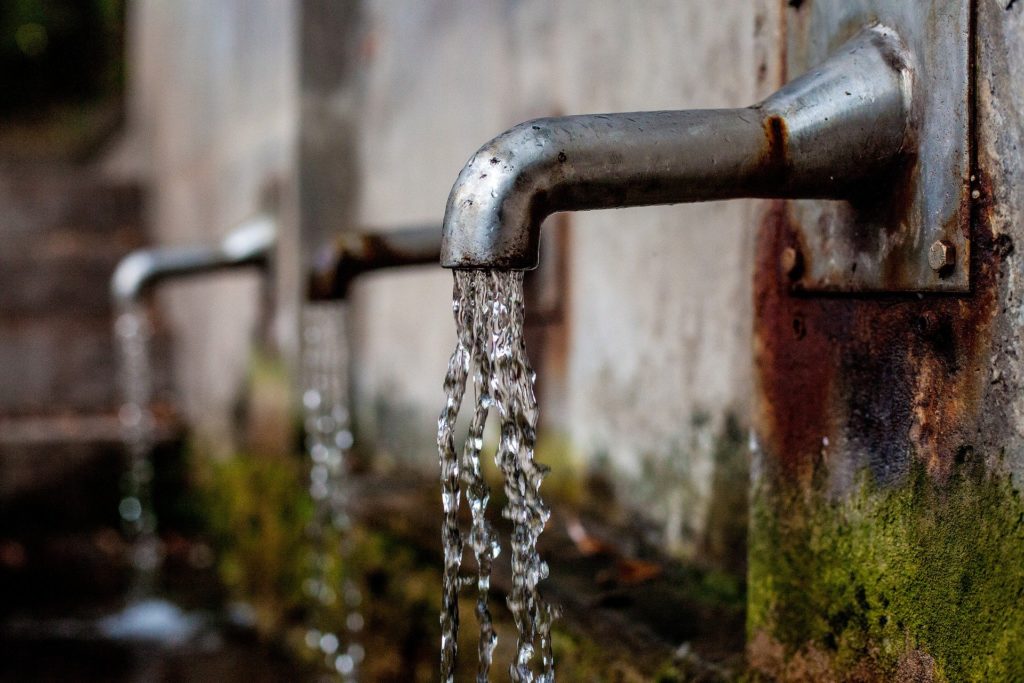Low flow sampling is one of the methods used to purge a monitoring well to collect a representative groundwater sample for analysis. The goal is to be able to collect a groundwater sample with minimal disturbance to the water within the well while minimizing outside influences that may impact the groundwater chemistry prior to the collection of the groundwater sample.
What is Low Flow Sampling?
Low flow sampling involves the purging of groundwater at rates of less than ~500 ml/min and monitoring select groundwater chemistry indicators (pH, temperature,  oxidation and reduction potentials, dissolved oxygen, conductivity, etc.) until such indicator readings stabilize. The method works on the principle that the water within the screened portion of the well passes through the sand filter within the annular space of the well bore and well screen and does not mix with the water above or below the pump intake in the well. Once indicator readings stabilize, a representative groundwater formation sample is ready to be collected. The US Environmental Protection Agency has put together a Standard Operating Procedures for performing low flow sampling.
oxidation and reduction potentials, dissolved oxygen, conductivity, etc.) until such indicator readings stabilize. The method works on the principle that the water within the screened portion of the well passes through the sand filter within the annular space of the well bore and well screen and does not mix with the water above or below the pump intake in the well. Once indicator readings stabilize, a representative groundwater formation sample is ready to be collected. The US Environmental Protection Agency has put together a Standard Operating Procedures for performing low flow sampling.
What Are the Pros of Using the Low Flow Method?
One of the greatest reasons for using the low flow method is the low volume of water that is generated during the purging process. Placing the pump intake in close proximity to the water bearing zones within the screened portion of the well will allow the well to stabilize faster and require purging less “stagnant” water from inside the well from above or below the pump intake. The low flow method also allows sampling groundwater from a water bearing zone with the highest levels on contaminants, such as groundwater impacting a smear zone of impacted soils. The low water generation also reduces the disposal cost of the groundwater which can expensive. The low pumping rate also puts less stress on the well compared to the higher stress that volumetric purging induces on the well and results in less mixing of the water in the well with the representative formation water and results in less turbidity in the well sample. Low flow sampling is designed to minimize the drawdown in the well and therefore result in less aeration of the water sample and reduced off gassing which are important when the contaminants of concern at a site volatilize or precipitate easily.
What Are the Cons of the Low Flow Method?
The major disadvantages to the low flow sampling method include the higher initial set up costs of purchasing additional equipment not necessary for the other purging methods. With the additional equipment includes a higher risk of cross contamination of samples from sampling equipment that was not properly decontaminated between wells. The low flow sampling method also requires additional training for the proper procedures for the pump installation and monitoring of the groundwater indicators and subsequent criteria for when a well has stabilized. Additionally, due to the low movement of water in the purging tubing and through the flow through cell, the water can increase in temperature on hot sunny days which can affect the chemistry of the groundwater sample.
The low flow method requires additional set-up time for the additional equipment which requires additional decontamination time. This disadvantage can turn into an advantage based on the time it may require for the well parameters to stabilize and the collection of a representative sample using the low flow method may be substantially less than the time to purge a well a predetermined amount and collect a sample using the volumetric purging method.
Contact GSI Environmental Today
If you require groundwater samples to be collected from monitoring wells on your property, the experts at GSI Environmental can help you. Learn more about our groundwater sampling services by calling 717-691-9799 or by filling out our contact form.
